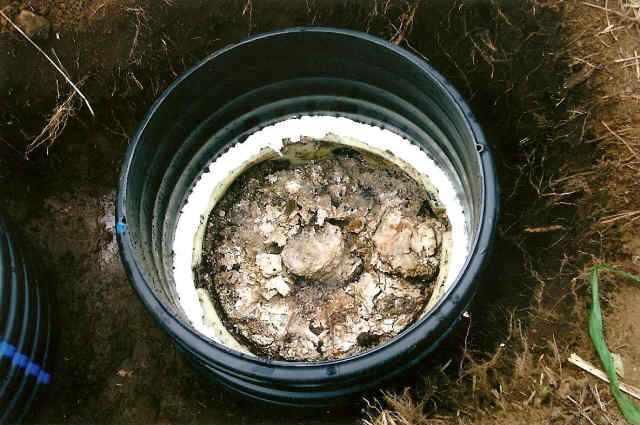Septic System Maintenance
The U.S. Government Department of Health, Education, and Welfare Public Health Service says,
“A septic tank system will serve a home satisfactorily only if it is properly designed, installed, and adequately maintained.
Even a good system which does not have proper care and attention may become a nuisance, and burdensome expense.”

Septic system maintenance means two simple things. First, sludge that accumulated in the bottom of the tank must be pumped out periodically. Solids will continue to build up at the bottom of the tank. This is because the inorganic fraction of the sludge is not biodegradable, if it’s not pumped out, sludge will accumulate until it overflows where it can cause problems in the Leachingfild. This will cause the system to clog, and it will need to be replaced at a great expense and inconvenience.
Second, System maintenance involves the bacteria necessary for solids digestion. If bacteria-killing products are used in the home – as they usually are- the bacteria should be replenished. If the bacteria level is too low, the solids may not be digested properly. The solids eventually build up and clog the system.
A key reason to maintain your septic system is to save money! Failing septic systems are expensive to repair or replace, and poor maintenance is often the culprit. Having your septic system inspected regularly is a bargain when you consider the cost of replacing the entire system. your system will need pumping depending on how many people live in the house and the size of the system (How Often is Service Needed?). An unusable septic system or one in disrepair will lower your property value and could pose a legal liability.

Filters
Septic tank filters are designed to keep solid particles in the septic tank. They are located on the outlet side of the tank where the tee is normally placed. Some filters fit inside the tee and some replace the tee. There are several different filter designs for residential applications and also for commercial use. Most residential filters trap particles larger than 1/16 to 3/16 of an inch in size. By trapping solids, the filter protects all downstream components, like the pump and drainfield, from damage.
What causes the thick crust in my tank?
The crust is the organic material that has congealed into a solid mass. This condition can indicate a bacterial deficiency.
I had my tank pumped out last week. Is it possible that it’s full already?
Not only is it possible, it’s necessary. Septic tanks are designed to operate full for proper water/solids separation.
Is there anything I can put in my tank to avoid pumping?
No. Some of the material in the tank is not biodegradable, this material must be pumped out.
My system backed up recently for the first time in many years. Why should I start maintaining now?
Even though the backup may have been caused by broken pipes, tree roots intruding into your lines, or some other obsruction, it is also possible that this backup is the first sign of system failure.
Do’s & Don’ts
Do Not flush cigarettes, sanitary napkins, disposable diapers, or other inorganic meterials down the drain.
Do Not overload your septic system. Use water sparingly.
Do Not put medicines, paint, thinner, disinfectant, pesticides, gasoline, oil, anti-freeze, etc down the drain.
Do Not drive or park over your system.
Do Not plant trees or shrubbery over your system.
Do keep good repair & maintenace records.
Do check all plumbing fixtures for leaks.
Do have your system pumped or inspected every 2 to 3 years.
Do remove your garbage disposal. Unless your system was designed for one, then use sparingly.
Do know where your septic system is located so that you can visually notice changes of appearance on the surface.